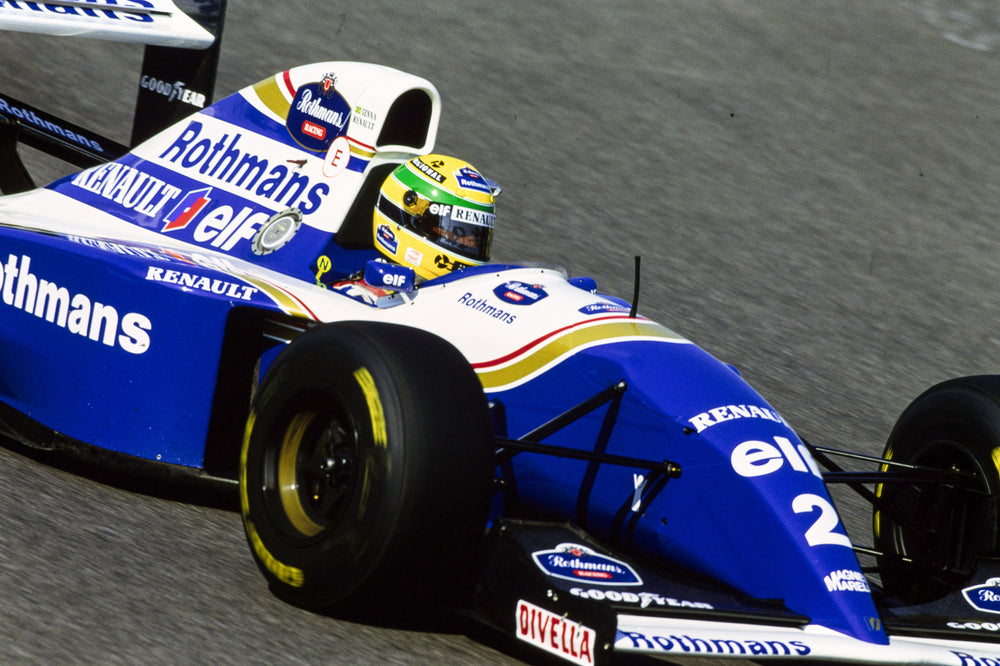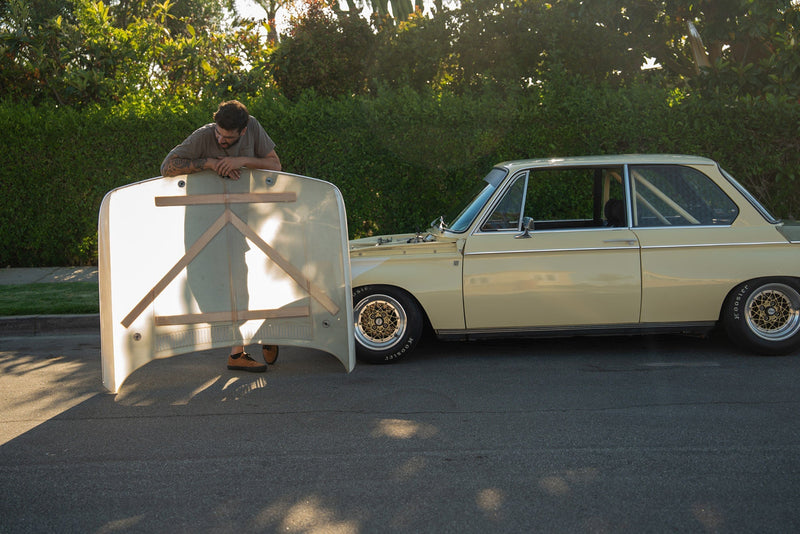
Paying tribute to his client in the latest edition of Formula 1’s official podcastBeyond the Grid , Senna’s former manager Julian Jakobi revealed that Senna, then in his fourth year with McLaren, arrived at the 1991 Belgian Grand Prix with two contracts ready to sign. One would extend his stay with McLaren, the other would confirm a move to Williams for 1992.
The Williams offer would in all likelihood have been at the expense of eventual 1992 World Champion, Nigel Mansell, who took a then-record nine wins en-route to the 1992 title aboard the active suspension-clad, Renault-engined FW14B that was easily the class of the field in 1992.
The chances of Mansell and Senna signing as teammates is slim, given that Mansell, just two races after securing the ’92 title in Hungary, announced his retirement from F1 after learning Williams had been courting three-time World Champion, and available, Alain Prost for 1993. One would imagine Senna’s arrival would have elicited much the same response, or a move in the opposite direction to McLaren.

 “Ayrton wanted to go to Williams but he was loyal to Honda,” Jakobi explains, who now manages Racing Point F1 driver, Sergio Perez. “His basic instinct was to go to Williams earlier (than 1994). But he was loyal, particularly to Mr Kawamoto, who was the president of Honda. He was very close to him, because Honda had basically brought themselves and Ayrton to McLaren in 1988 and they’d won three championships together.
“Ayrton wanted to go to Williams but he was loyal to Honda,” Jakobi explains, who now manages Racing Point F1 driver, Sergio Perez. “His basic instinct was to go to Williams earlier (than 1994). But he was loyal, particularly to Mr Kawamoto, who was the president of Honda. He was very close to him, because Honda had basically brought themselves and Ayrton to McLaren in 1988 and they’d won three championships together.“And I remember him telling me even in late 1991 when he won the third championship that he didn’t feel instinctively that the Honda was what it was, and he was worried about the future.
“In ‘91 I remember going to Spa with two contracts for Ayrton: One for McLaren and one for Williams. And Ayrton knew he should have gone to Williams, and we had both of the contracts ready to sign, and I thought on Sunday morning that he was going to sign with Williams.
 “But he’d spoken to Kawamoto overnight in Japan and he came in on Sunday morning and said “I’m going to stay another year”. So he stayed at McLaren for 92. But he could already have gone
for 92 and Nigel probably wouldn’t have been there. And that’s the year he won the championship. But when Ayrton backed out, Mansell stayed…”
“But he’d spoken to Kawamoto overnight in Japan and he came in on Sunday morning and said “I’m going to stay another year”. So he stayed at McLaren for 92. But he could already have gone
for 92 and Nigel probably wouldn’t have been there. And that’s the year he won the championship. But when Ayrton backed out, Mansell stayed…”Ironically, despite Senna’s loyalty to Honda for 1992, the Japanese marque pulled out of F1 at the end of that season, by which point Mansell’s seat at Williams had already been taken by Alain Prost. Again, Senna at Williams for 1993 would not happen either, his arch-rival having included an iron-clad clause in his contract stating the Brazilian would never be his teammate again.
Senna would eventually sign for Williams for 1994, but, tragically, would only start three Grand Prix with the reigning Constructors’ Champion.

Tributes pour in for Ayrton Senna and Roland Ratzenberger, 26 years on.
On lap seven of the ill-fated 1994 San Marino Grand Prix, Ayrton Senna’s Williams FW16 left the track at Tamburello, hitting the concrete wall at amore than 230kph. It was the exclamation point on one of the worst weekends in Formula 1 history.During Friday qualifying, Rubens Barrichello’s Jordan took flight over the kerbs at Variante Bassa, the 194 trying but not quite managing to launch itself over the neighbouring tyre barriers in a violent accident (the whiplash effect on Barrichello’s helmet upon impact is sickening to watch to this day). Mercifully, the young Brazilian, who went into Imola 2nd in the championship standings, would emerge relatively unscathed save a battered arm and a broken nose.
More bad news followed later weekend, as Jacques Heuclin was seriously injured in the Porsche Cup race that supported the 1994 San Marino Grand Prix. But again, though the former Le Mans entrant’s weekend was done, he had survived his heavy accident.


All luck ran out during Saturday qualifying with Roland Ratzenberger’s now infamous collision in only his fourth F1 race. Born on 4 July 1960, the Austrian was a former Formula Ford Festival winner, a regular on the British Formula 3 scene in the late 1980s before turning his attention to British Touring Cars, took podium finishes in Formula 3000 in both Britain and Japan, and tellingly, was a former class winner at Le Mans, all while chasing his F1 dream. British fans even knew Ratzenberger for his brief time alongside TV namesake Roland the Rat, where the Austrian demonstrated the character to which so many of his peers paid tribute in the years that followed.
Indeed, Simtek teammate David Brabham described Ratzenberger thusly on his official instagram today:
“Roland was my teammate. He had a wonderful smile – quite a wicked smile! – and his passion for motorsport was in abundance From sleeping in his car, from race to race, to reaching Formula 1, he climbed that mountain. What an incredible achievement. It was a real honour to be his teammate.
“I remember Roland not just today but also with my helmet” –F1’s old logo and ‘Imola, 1st May 1994’ adorn the top of Brabham’s helmet design – As I remember a weekend full of loss and sadness, that made a huge impact on me and others around me. RIP brother.”

All the more ironic that, had it not been for the last minute pull-out of a sponsor, Ratzenberger would likely have taken the 1991 seat at Jordan that ultimately went to Bertrand Gachot, and latterly, Michael Schumacher.
Understandably rattled by Ratzenberger’s demise, it was a very shaky 25-car grid that lined up at Imola on 1 May. An emotionally drained Ayrton Senna was on pole position for the third time in a row for Williams, the desire to finally see the chequered flag aboard his FW14 even more absolute following Ratzenberger’s passing: the Brazilian planned to hold the Austrian flag he’d secretly hidden in his racesuit aloft after taking his first win with Williams.


Were nerves not already stretched to eruption, an almighty accident featuring Benetton’s JJ Lehto, who’d stalled on the grid, and an unsighted Pedro Lamy led to a sickening impact on the grid, Lamy’s Lotus torpedoing itself against the Benetton’s gearbox, much of the resultant debris, and even a rogue wheel, landing in the nearby grandstand. Three spectators and a policeman suffered minor injuries, but mercifully, both drivers scrambled free of the wreckage unscathed, save Lehto’s bruised right arm.
Few could miss the ominous parallels though with Lamy’s accident and a similar incident that had claimed the life of Italian rookie Riccardo Paletti at the 1982 Canadian Grand Prix. Like Lamy, Paletti, in only his second F1 start, had hit Didier Pironi’s pole-sitting Ferrari at close to 180kph, exploding the Osella’s nose in the process. The impact was too severe for the Italian to recover, and barely a month after the death of Gilles Villeneuve at Zolder, F1 had lost another life in 1982.
In a bittersweet irony, Michele Alboreto had also been on the grid that day in Canada, and was the only man from that race who also lined up at Imola in 1994. The Italian retired from the race when the unseated right rear wheel of his Minardi came loose in the pitlane, mowing down several mechanics. Lap 49 of a harrowing 58.
The headlines though on Sunday belonged to Senna. Schumacher’s third win in a row for Benetton, Nicola Larini’s maiden podium with Ferrari in Italy, and Hakkinen securing Peugeot’s first F1 podium as an engine manufacturer all, understandably, slipped almost into obscurity. Not since Jim Clark’s demise at Hockenheim in 1968 had F1 lost the face of the sport, and not since Spa in 1960 had Formula 1 lost two drivers in one weekend (Chris Bristow and Alan Stacey). In its official race report, Motorsport Magazine ran the headline ‘Black Sunday.’ Few descriptions of Imola’s dark weekend have ever been more poignant.
*Images courtesy of Motorsport Images




















































